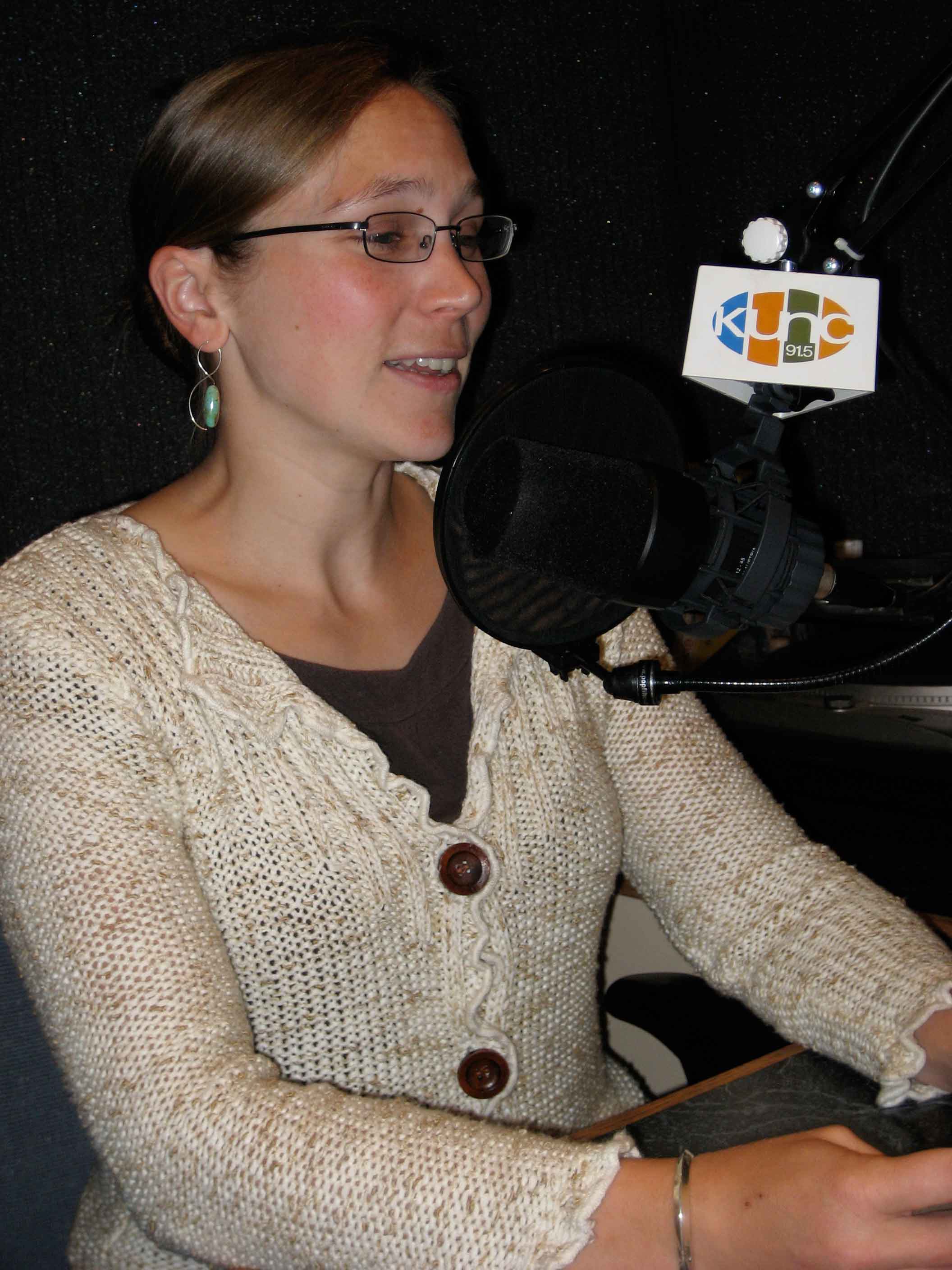27 August 2010
Mass Media Fellowship: As the media evolves, training in newsrooms remains relevant

AGU's 2009 Mass Media Fellow, Erka Schielke, during her fellowship at at KUNC Radio in Greeley, Colorado.
Guest post by Stacey Pasco, Mass Media Program Manager at the American Association for the Advancement of Science
If journalism is changing and traditional media sites are disappearing, is science journalism training still relevant? I’m often asked this question as the manager of the 37-year old AAAS Mass Media Science & Engineering Fellowship. More than relevant, it’s required. If scientists are expected to communicate with the public, and the desire remains for a public that’s engaged with science; then you must train the science communicators.
AAAS has placed nearly 600 Fellows at more than 100 media sites since its inception – media sites in markets large and small, including the Chicago Tribune, Los Angeles Times, KUNC-FM (Greeley, Colo.), Newsweek, Albuquerque Journal, Scientific American, Milwaukee Journal, NPR, and Voice of America. In many ways the program remains the same. Fellows work for ten weeks learning the ins and outs of how to report science news for a general audience. Sites benefit from having a science “expert” on staff who can help frame the more difficult science stories and who isn’t afraid of the science.
We at AAAS understand that change is coming. I have managed the program for seven years. When I first started, the Internet was alive and well, but many media outlets were still thinking about how to begin to use the technology. It wasn’t uncommon to have an in-depth discussion with an editor prior to the summer to see if it would be okay if a Fellow were to write for print and for the Internet. Now such a discussion not only doesn’t need to take place; it would be ridiculous. Of course Fellows will be working in whatever medium their site needs them to work in on any given day. Fellows produce radio pieces, blog entries, podcasts, print pieces, multimedia slideshows and more.
The mentors who work with us each year report how much they enjoy having a Fellow on site, and yes, increasingly state how much they appreciate the extra set of hands. In some cases a Fellow is the only science reporter in the newsroom, even in areas that are saturated with scientific research news. Beyond the immediacy of having Fellows help shore up science journalism is the commonality they have with one another from year to year. Fellows have a desire to communicate the outcomes of their work. They want the public to be as excited about the science as they are and to be interested enough to dig deeper.
As I said, in many ways the Fellowship has not changed. The Fellows receive training from some of the brightest journalists in the country. They learn on the job how to find, craft and communicate their story. Regardless of how the media evolves or doesn’t evolve, they will need to use those skills as scientists, communicators, and as members of their community.
– Stacey Pasco is the Mass Media Program Manager at AAAS
AGU sponsors a Mass Media Fellow every year. Interested in applying? The deadline for the 2011 Fellowship is January 15, 2011.


 The Plainspoken Scientist is the science communication blog of AGU’s Sharing Science program. With this blog, we wish to showcase creative and effective science communication via multiple mediums and modes.
The Plainspoken Scientist is the science communication blog of AGU’s Sharing Science program. With this blog, we wish to showcase creative and effective science communication via multiple mediums and modes.